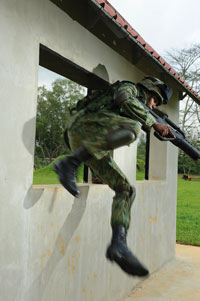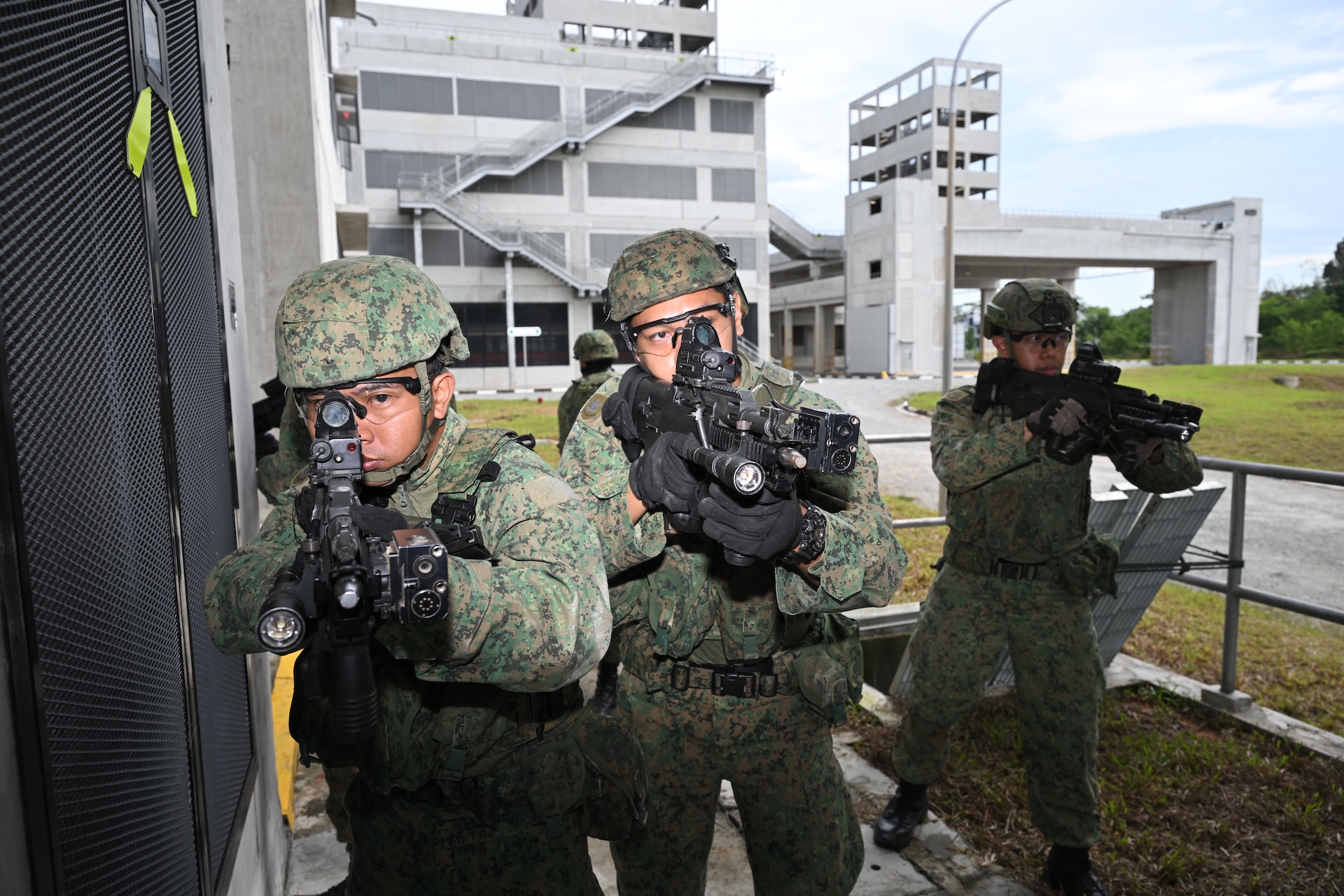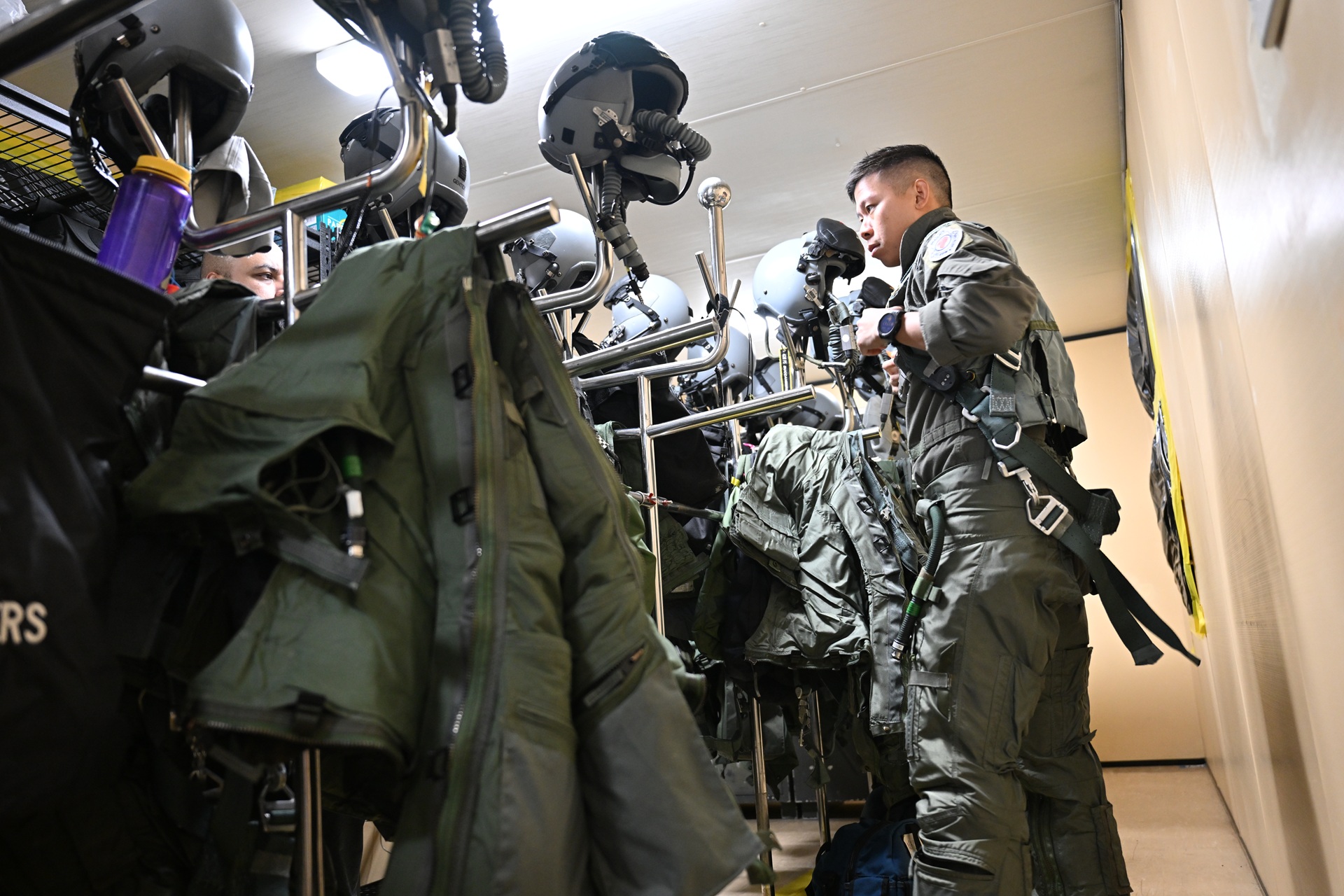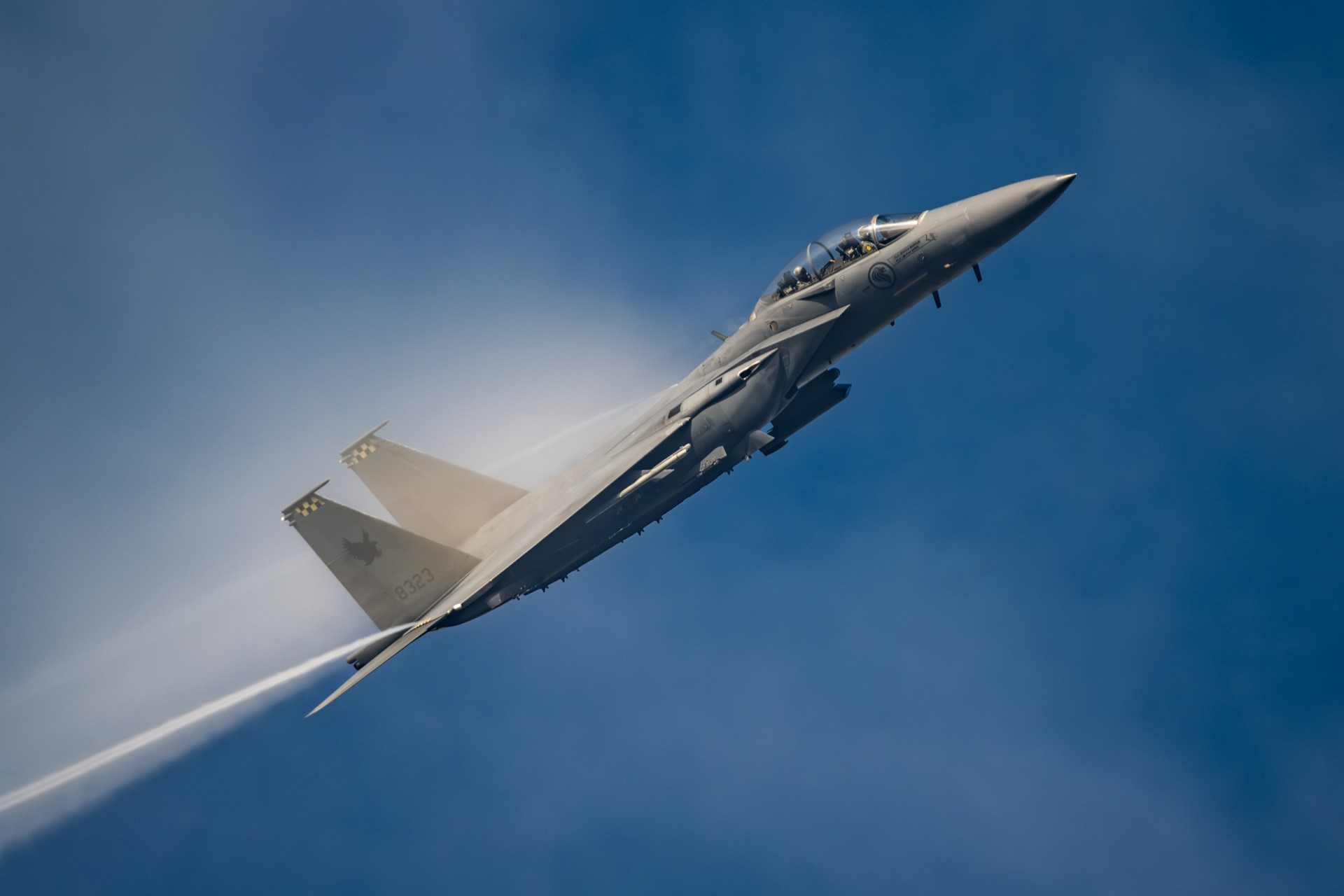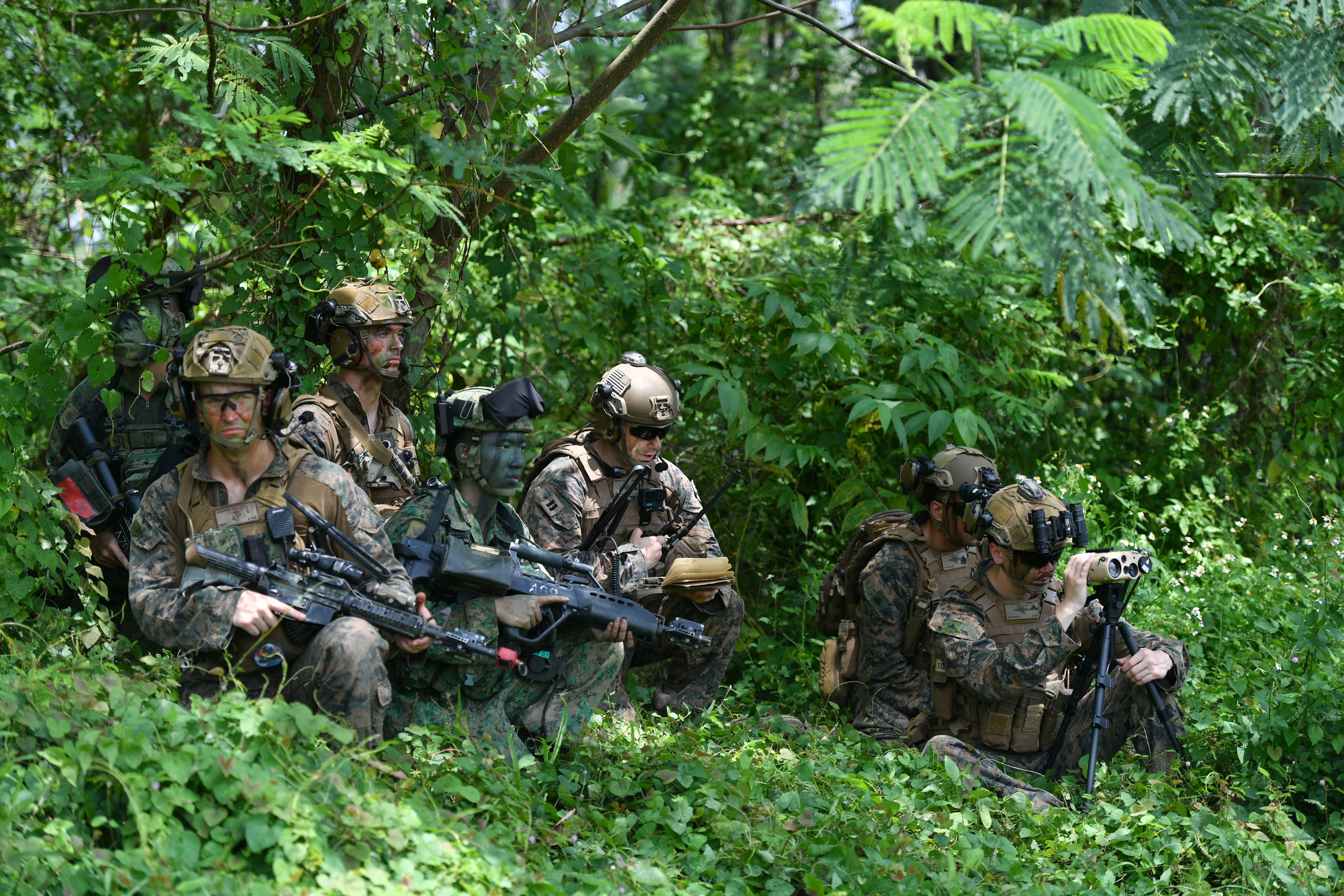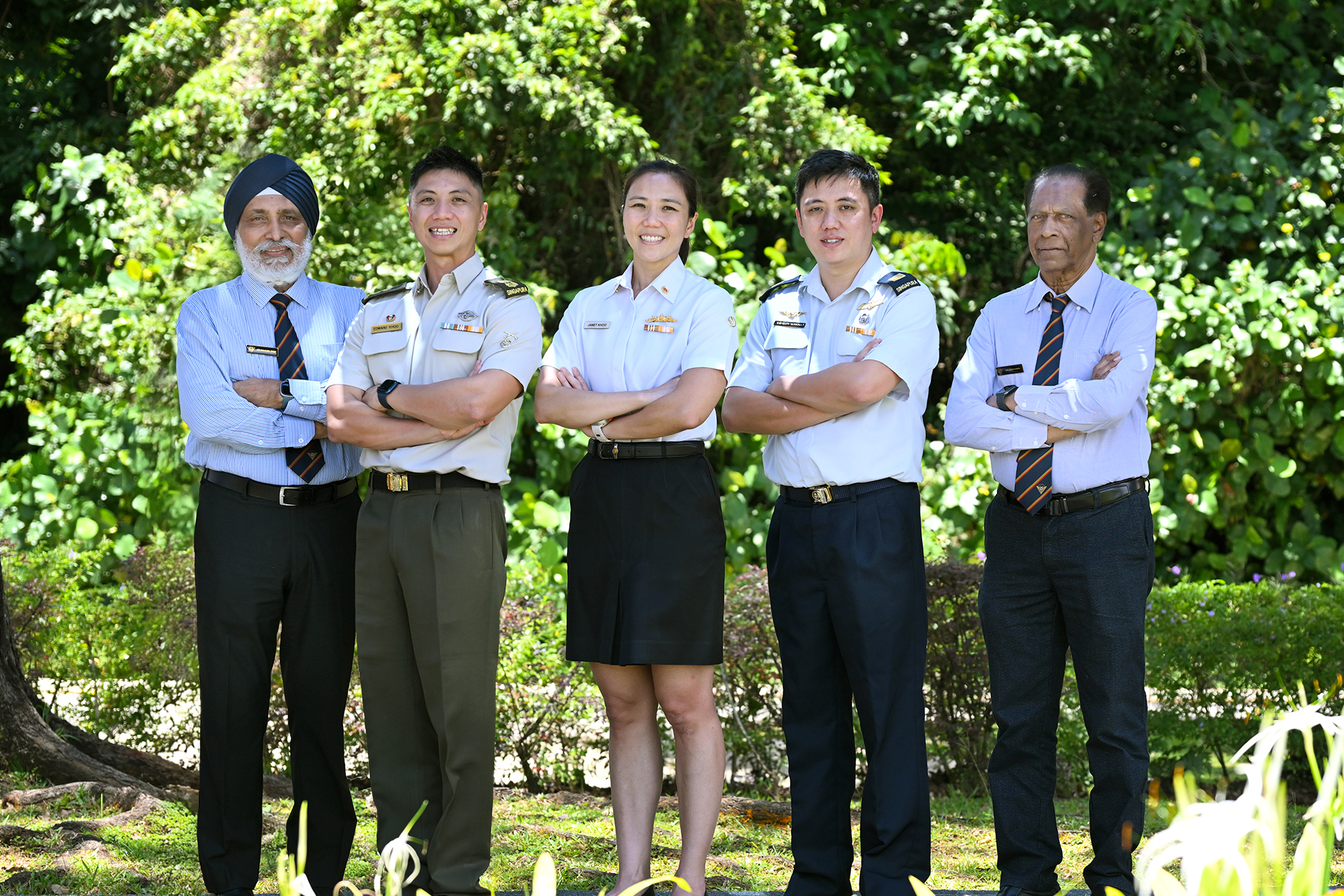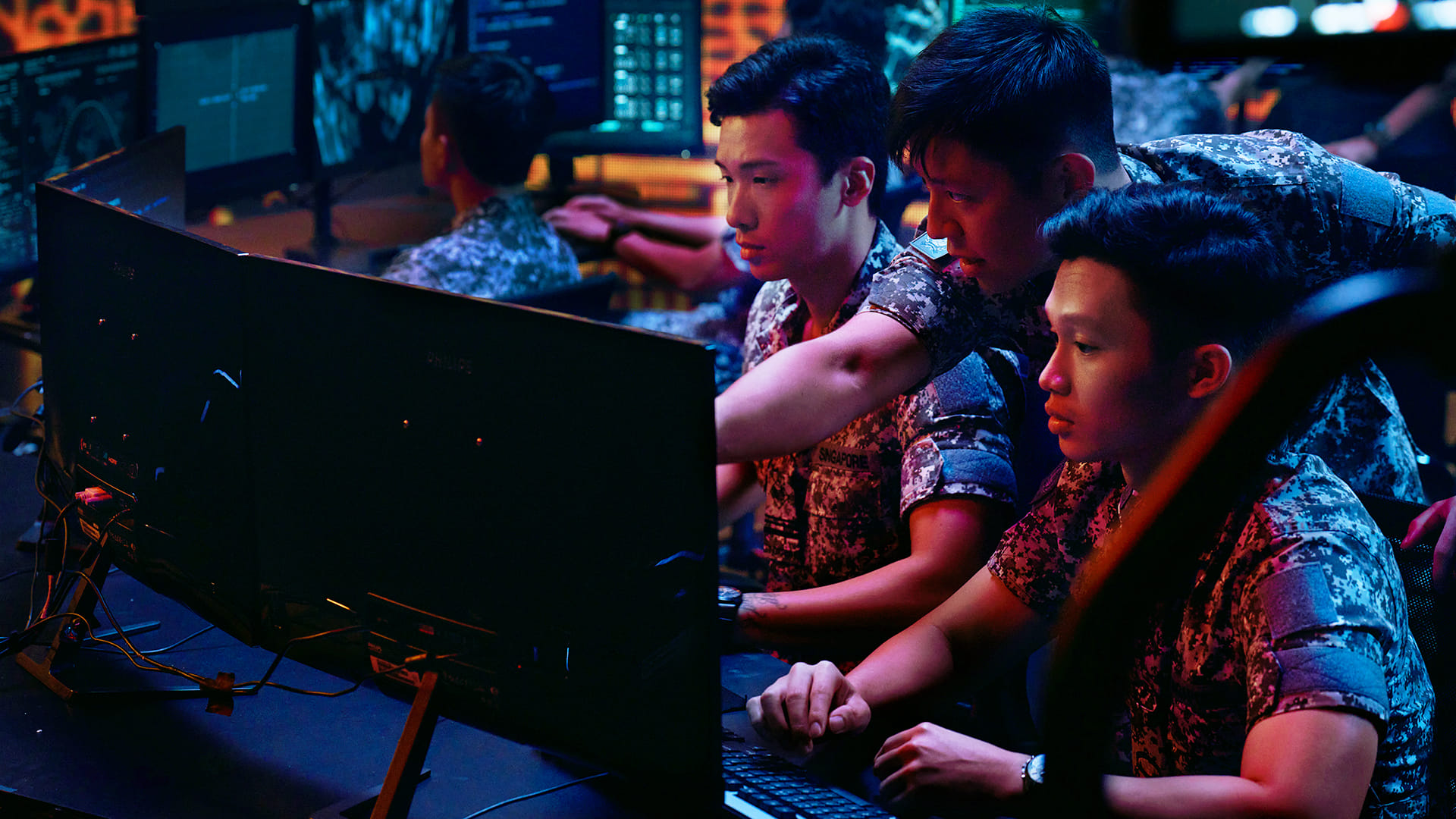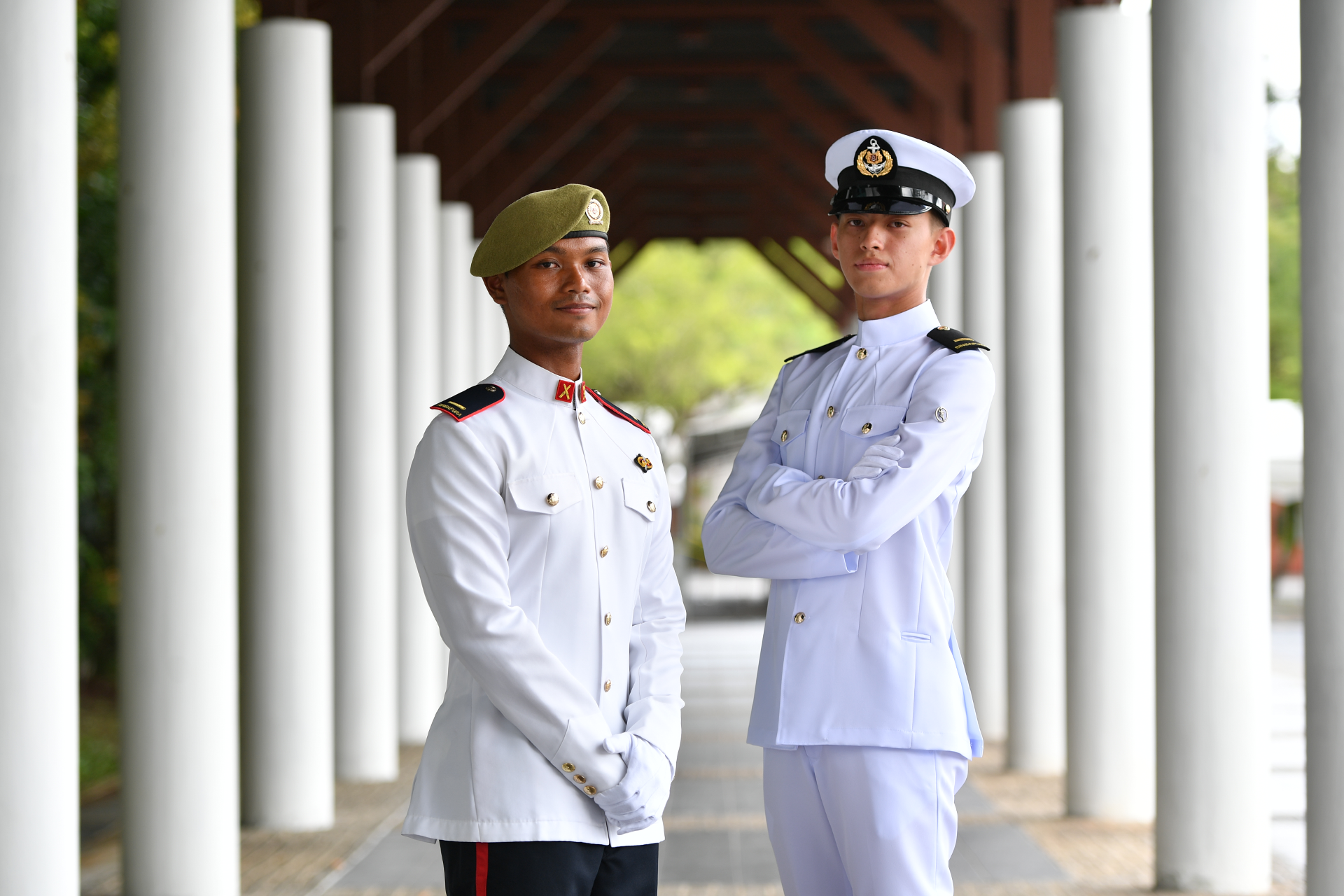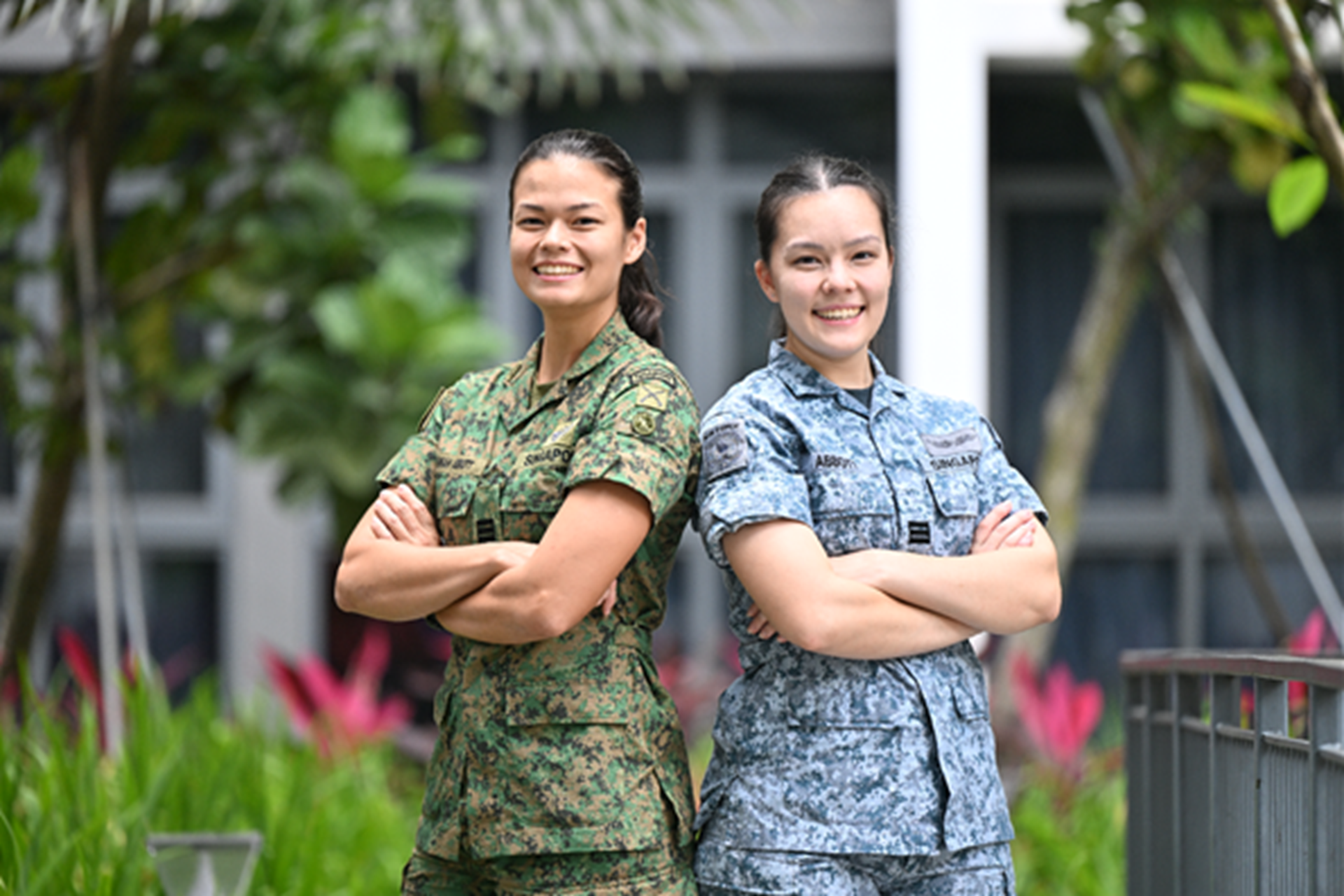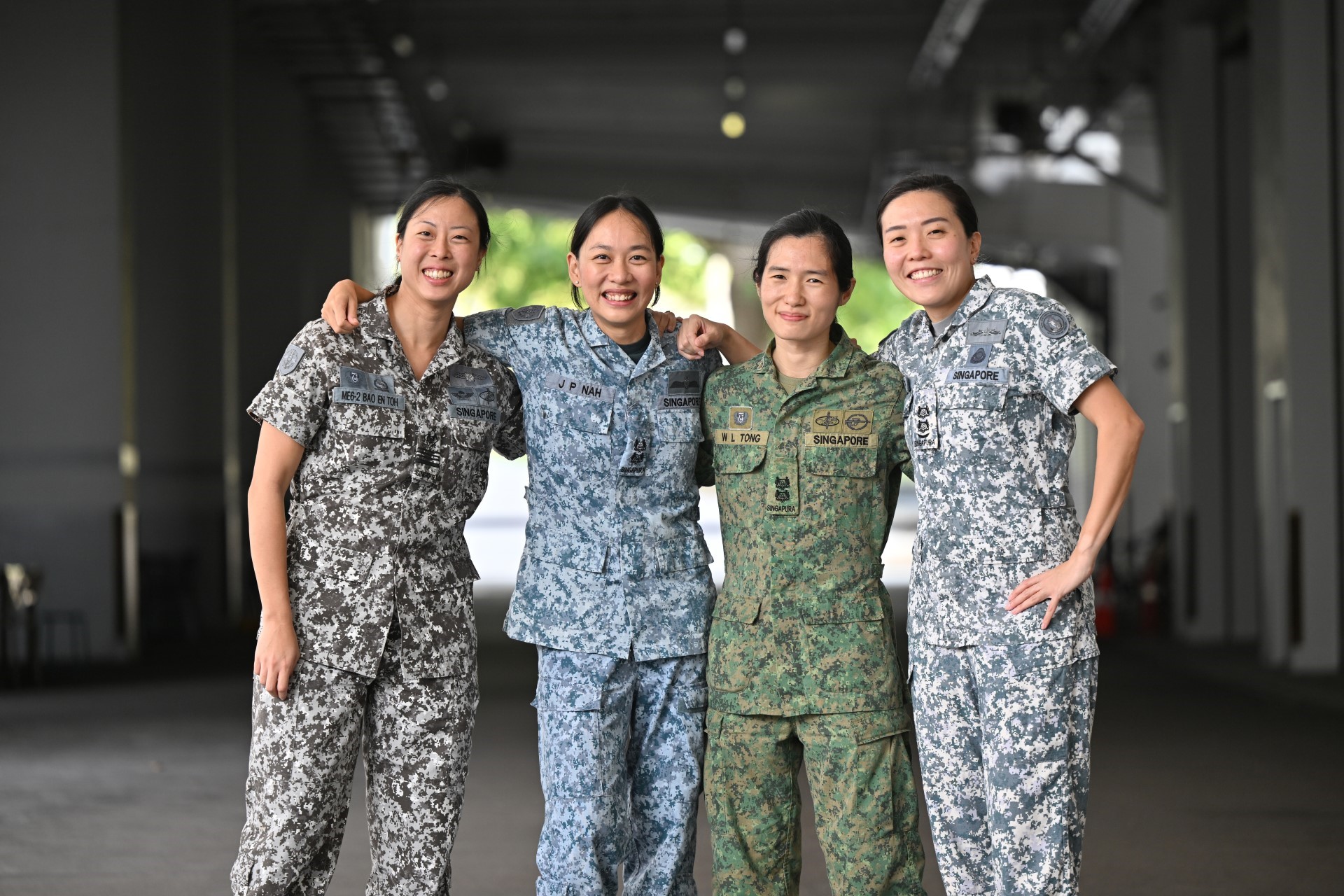ENHANCED COMBAT FITNESS TRAINING
PHOTO // Chua Soon Lye and Chai Sian Liang
To meet the operational demands of the 3rd Generation Singapore Armed Forces (SAF), the training system gets an update to ensure that it is relevant, customised, progressive and sustained.
Ask any soldier what he thinks of combat fitness training and the Standard Obstacle Course (SOC) will definitely be one of the first things that come to mind. Offering a controlled environment to train SAF soldiers for the battlefield that they are expected to fight in, the course has long been an essential component of training.
With the evolving battlefield of today, the SAF recently made changes to better align its combat fitness training regime with the demands.
Said Chief of Army Major-General (MG) Chan Chun Sing when he announced these changes on 7 Sep: "To better prepare our soldiers to meet evolving operational demands, the SAF has strengthened its combat fitness training system, using advances in fitness training science."
The revisions are also designed to meet the challenges of an increasingly complex and urbanised operational environment as the SAF develops into a full spectrum 3rd Generation force. Added MG Chan: "Urban fights place a different set of demands on a soldier s combat fitness. In urban environments, fights are likely to be more intense and at a higher tempo."
The new training system comprises two components - Vocation Related Exercises (VREs) and the redesigned combat obstacle course.
Mission-specific exercises
A customised exercise regime: that is what the all-new VREs offer to SAF soldiers. "A better understanding of training science has enabled the Army to design different sets of exercises to strengthen specific muscle groups which the individual vocations need to complete their combat tasks," explained MG Chan.
While training and passing the Individual Physical Proficiency Test (IPPT) will remain the basic requirement for all soldiers from the day they enlist, the introduction of VREs provides progressive, customised and sustained training.
Combat tasks differ from vocation to vocation and so too must the training, said MG Chan. For example, as infantry soldiers are required to march long distances, their VREs are designed to give them a full body workout. In contrast, artillery soldiers who experience bursts of intense activity during ammunition loading operations are given a set of VREs which target their upper body and develop core strength.
Likewise, combat engineers - whose primary duties include lifting and moving heavy equipment - have a set of VREs which target core and lower-body strength.
"The VREs are developed in line with sports science principles of progressive training and specificity - targeting muscle groups relevant for the combat task," said sports physician Dr Roger Tian from Changi General Hospital.
In the development of the VREs, the Army Fitness Centre (AFC) worked with the various formations to formulate these exercises. Involving the individual formations was essential as the units on the ground know their requirements best, said 1st Warrant Officer Lim Tse Peng, Chief Instructor at the School of Physical Training, AFC.
The VREs were also specially designed such that soldiers may perform them anywhere with readily available equipment such as their field packs, jerry cans and even ammunition boxes. They do not require complex exercise equipment and may be conducted both indoors and outdoors.
Relevant combat obstacles
In updating the training system to meet today's operational demands, six existing obstacles of the SOC have been replaced with seven new ones, increasing the total number of obstacles from 11 to 12.
"The new obstacles have been designed to better emulate the operating environment and will better develop soldiers' strength, agility and endurance for basic combat movement and tasks," said Colonel (COL) Ng Wai Kit, Assistant Chief of the General Staff (Training).
"The changes adhere to several sports science principles such as progressive overload and specificity. For example, soldiers are trained progressively on the VOC to give their bodies time to adapt and grow stronger, while the VREs target the specific muscle groups that soldiers will require for their individual combat tasks."
- Dr Roger Tian, sports physician at the Changi General Hospital
For example, the third obstacle of the redesigned SOC - named Rubble - features two sets of short concrete walls and metal bars, where soldiers are required to vault over the walls and duck under the bars in quick succession. This trains soldiers in movement through damaged urban spaces that are usually made up of collapsed concrete structures.
Another obstacle - the Corridor - uses a replica of a concrete corridor with opened window panes that require soldiers to duck as they move under the panes. This trains soldiers to duck through areas of restricted height. For safety, strips of rubber line the bottom of each pane.
Corporal (CPL) Mohamed Syakeer bin Abdul Rahim, an Infantry soldier from 3rd Battalion, Singapore Infantry Regiment (3 SIR), said the Corridor was the most beneficial obstacle to him. "During urban operations, we have to walk under windows so that it is harder for enemy soldiers to spot us," he explained.
"The new obstacles are more realistic and definitely increase my level of confidence when we're carrying out operations," he added.
While some of the training methods used in the past are still relevant, the improved combat obstacle course focuses on training soldiers to cope with the demands which they will face as the SAF continues to evolve to take on more roles beyond conventional warfare, said MG Chan.
For example, the SAF has been deployed in numerous Humanitarian Assistance and Disaster Relief (HADR) operations in the aid of disasters such as the Boxing Day Tsunami of 2004.
Familiar obstacles such as the Low Wall and Jacob's Ladder (now renamed Apex Ladder) also feature in the redesigned obstacle course. These train basic confidence in executing combat manoeuvres and have been retained because of their relevance to evolving operational demands, said COL Ng.
Said Dr Tian: "The redesigned obstacles are safer for soldiers while being more relevant to combat fitness training." For example, in the final obstacle formerly called the Low Ramp, soldiers had to leap off a straight drop. This has been replaced with the Terrace obstacle, which is basically a giant staircase where soldiers descend from height with two successive jumps.
Team-based training
Building on the impetus for progressive training, the new fitness regime will see soldiers eventually graduate to clearing the SOC as a team. Called the Vocation Obstacle Course (VOC), soldiers will clear the redesigned obstacle course at their basic group level, be it as an infantry section or an artillery detachment.
Besides the emphasis on teamwork, the VOC was designed to be vocation-specific, as with the VREs.
For example, the Commandos are required to clear the VOC while carrying a detachment's typical load. They must carry two P90 rifles weighing about 2.5kg each and one General Purpose Machine Gun weighing about 12.5kg, on top of their own standard equipment as they clear the VOC.
Midway through the VOC, they are required to conduct casualty evacuation with a man on a stretcher.
Recognising that different vocations carry different combat loads and perform different combat tasks, the pass timings vary from vocation to vocation.
"The VOC is more relevant to our combat tasks as it better replicates the environments which we train in," said 3rd Sergeant (3SG) Leroi Lim, a section leader from 3 SIR. He has led his men to clear the VOC well below the pass timing of 18 minutes required of his vocation as an Infantry soldier. "Moreover, the timings are definitely achievable because of the progressive manner in which we are trained."
Through the implementation of this revamped holistic training system as of 1 Sep, the soldiers will build up their combat fitness. From focusing on individual competencies at the early stages in the Basic Military Training Centre, Specialist Cadet Schools and Officer Cadet School, soldiers will progress to becoming proficient in clearing the VOC by the time their full-time National Service ends.
Subsequently, their fitness will be sustained as training on the same system will continue even as they move on to Operationally Ready National Service.
The revised combat fitness training regime will not apply to current batches of Operationally Ready National Servicemen who have not been trained in the VREs, redesigned SOC or VOC.
